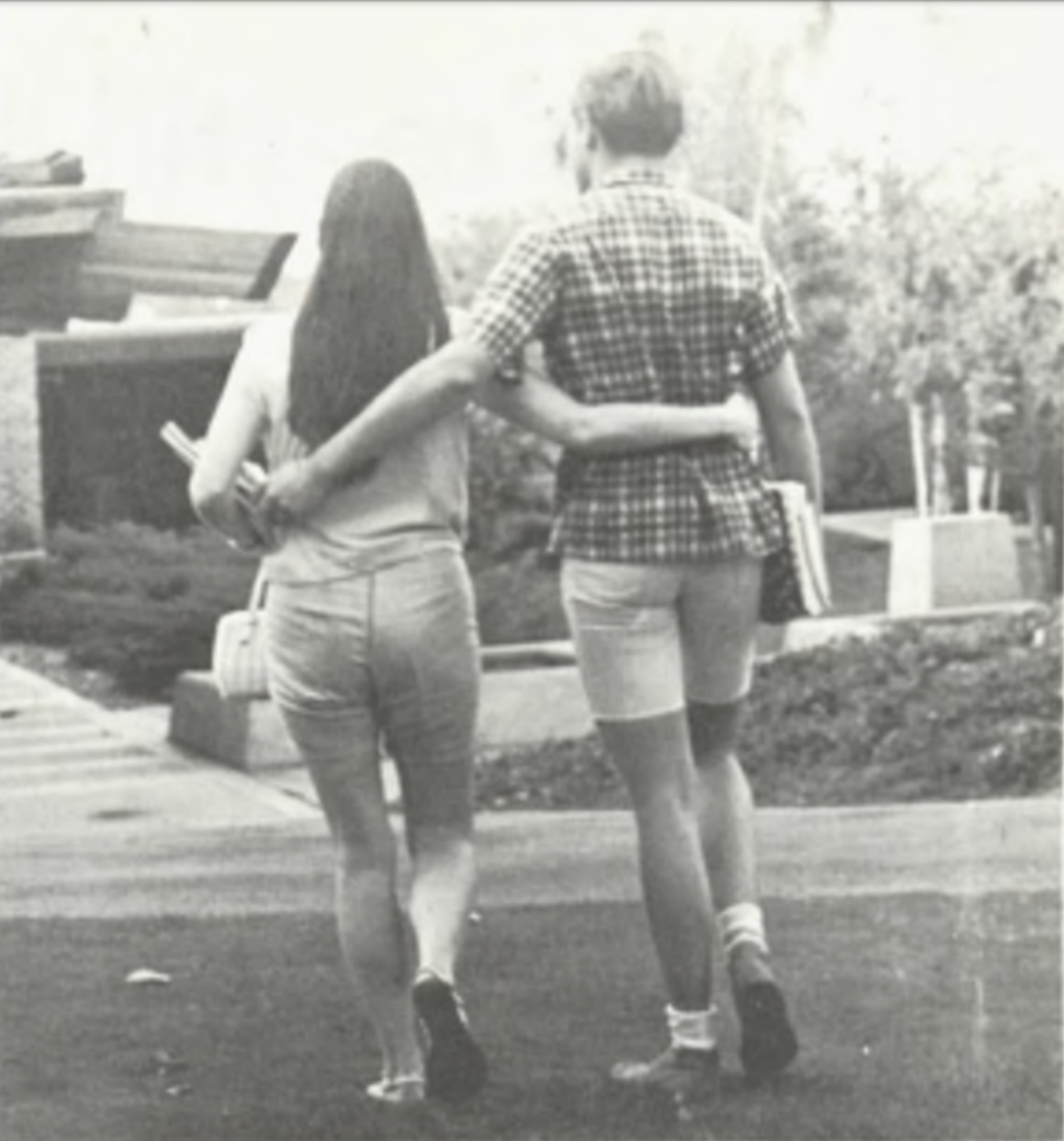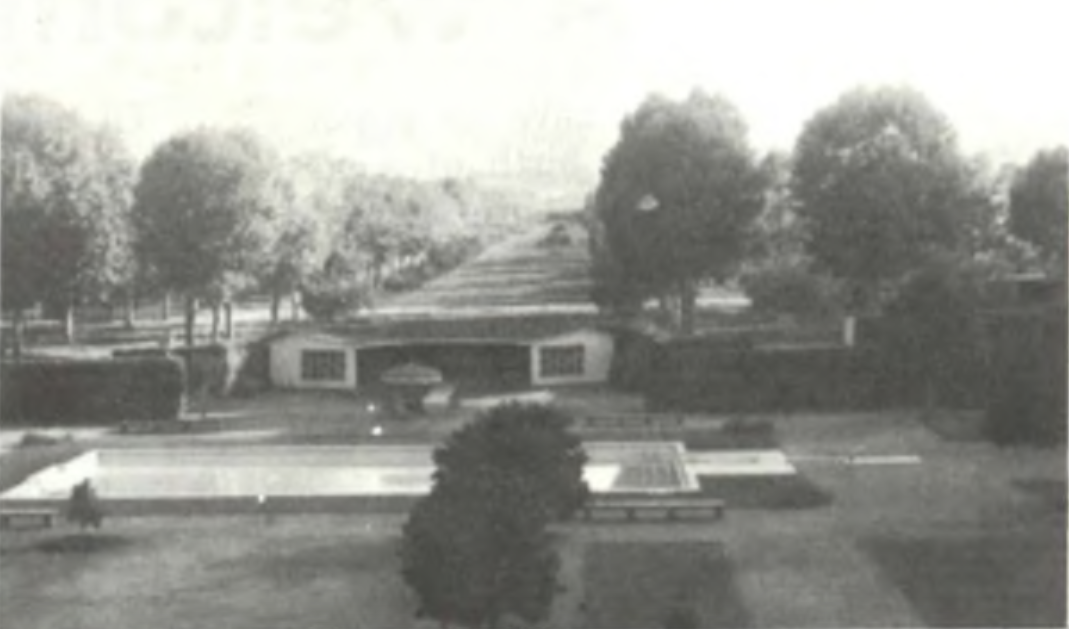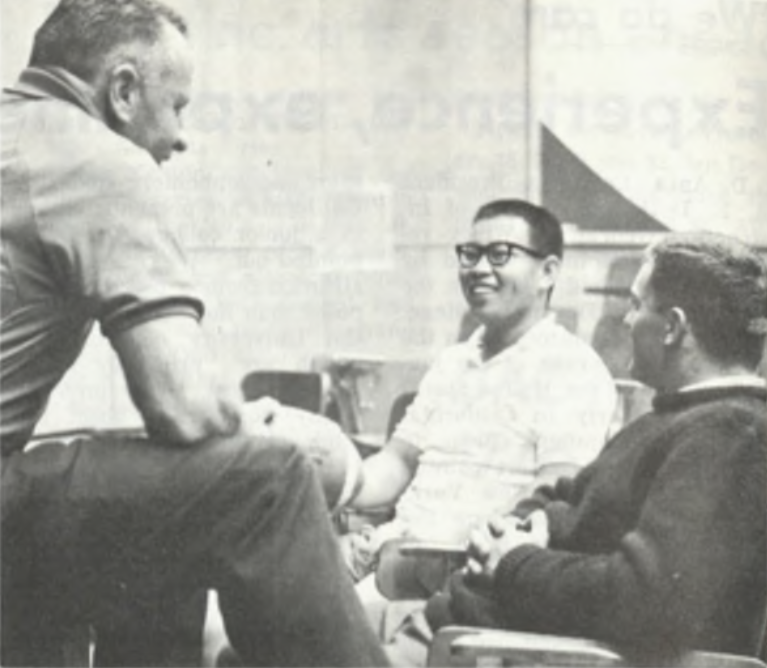De Anza College’s President A.R. DeHart and Dean of Instruction George A. Willey reflect the excitement shared by all who have had a hand in the realization of De Anza College.
Dr. DeHart commented on the phenomenal growth of the junior college in the United States and particularly in California. “It’s a development unique to the U.S.” Dr. DeHart pointed to such states as New York, Florida and Illinois where the junior college boom is in full swing. Ten new junior colleges opened up in California last year (De Anza was the biggest). In all, one junior college is built in the U.S. every week.
Dr. DeHart has “mixed emotions” about the popular prediction that the junior college will eventually take over all lower division education, with the state colleges and the University of California assuming more advanced education. “It may well come about,” he agreed.
Eighty per cent of all freshman and sophomore students in California are presently enrolled in a junior college, Dr. DeHart pointed out. “We’re a better institution rom a teaching standpoint than the State Colleges or the University of California,” whih are “primarily for research. Most U.C. professors really don’t care about their students. We do care.”
A stormy issue the past few years at Foothill College, and one that is bound to come up this coming year at De Anza is the dress code. Dr. DeHart defended the code, noting that it was started by students when he was dean of students at Foothill. (The code is now District policy.) “Nobody i ery eager to tell students of a college how to look,” he explained, but predicted that “it’s this kind of image that’s going to pass this tax election.”
President De Hart bemoaned the fact that the dress code resulted in “such a waste of creative energy.” “It’s such a small thing to be concerned about.” He did acknowledge, however, that the code can be modified. “The avenues for change are always open.”
“There is likely to be a greater interest in experimentation at De Anza,” noted George A. Willey, dean of instruction. Much of this experimentation will be through the use of computers. One obvious advantage of the computer has been registration, which has virtually eliminated long lines and time conflicts.
Although many schools don’t have a College Hour, Dr. Willey thinks it is a “great idea.”
“There are so many things you can do with College Hour.” The newly instituted Faculty Hour, from one to teo o’clock every Friday afternoon, has three purposes.
First, it’s an opportunity for the faculty to share some problems. Dr. Willey noted that at Foothill College “it was impossible for the faculty to get it together with any kind of ease.” The second advantage will be for new faculty (25 instructors who didn’t come from Foothill.)
“It has always been difficult to integrate new faculty,” explained Dr. Willey.
The third advantage of a Faculty Hour will be an opportunity for a “really good faculty-student relationship.” Perhaps some kind of activity for the students by the faculty could be instituted, suggested Dr. Willey.
The only course that has been substantially changed is Psychology 50. It will be taught twice a week for four weeks in the large lecture room seating 323 students. President DeHart, Dean Willey and Dean of Students Thomas Clements will address these large sessions, which will then break up into much smaller groups.
The once a week, three-hour evening classes for some subjects “reflects our interest in experimentation.” Dr. Willey conceded, however, that “teachers will have to revise their presentations.”
Archived from Volume 1, Issue 1.





